Welcome to Garden 101, your friendly guide to help you nurture your green thumb and embark on an exciting gardening journey. Starting a garden can seem overwhelming, but with the right tools and knowledge, anyone can create a beautiful and thriving outdoor oasis. Whether you want to grow fresh vegetables, colorful flowers, or a mix of both, this beginner’s guide to gardening has got you covered.
Key Takeaways:
- Garden 101 is a comprehensive beginner’s guide to gardening
- This guide covers essential topics such as gardening zones, tools and supplies, soil preparation, and plant selection
- Proper soil preparation is crucial for optimal plant growth and long-term garden maintenance
- Gamalkart is a reliable source for gardening pots, planters, tools, and equipment
- By following the tips and techniques outlined in this guide, even the most novice gardeners can create a beautiful and thriving garden
Know Your Gardening Zone
Before you dive into the world of gardening, it’s crucial to know your gardening zone and understand the unique climatic conditions it presents. Your gardening zone is determined based on the average minimum temperature for your area, and it affects what plants you can grow and when to plant them.
If you’re unsure of your gardening zone, you can easily find out by clicking on this link (insert hyperlink to the appropriate USDA website). Knowing your zone is particularly important for beginners, as it helps you select plants that are suitable for your location and ensure their survival in your garden.
Once you know your gardening zone, it’s also important to have the right gardening tools and supplies. Essential supplies include a garden shovel, gloves, pruners, and a wheelbarrow. These tools will help you prepare your soil for planting, sow your seeds, and maintain your garden throughout the season.
Choosing the right location for your plants is essential, as different plants require different amounts of sunlight. To determine the sunlight conditions of a spot, observe it for a full sunny day. If it gets 6-8 hours of sun, it’s full sun; 4-6 hours is part sun/part shade, and below 4 hours is considered shade.
If you’re new to gardening, you may wonder what the best method is to start your garden. You can start a garden through various methods, such as traditional digging, no-dig method, or using raised beds or containers. Consider your space, gardening goals, and personal preference when deciding which method to use.
Good soil quality is essential for a healthy garden, so it’s recommended to have your soil tested and amend it accordingly with compost or other organic materials. You can also enrich your soil by adding nutrients such as bone meal or fish emulsion.
When it comes to planting, you’ll need tools such as hand trowels and garden soil or potting soil. Make sure to follow planting instructions for each plant, including planting depth and spacing. This will help ensure optimal plant growth and a successful garden.
Maintaining and caring for your garden involves tasks like watering the plants, pruning, and protecting against pests and diseases. Regular maintenance will help keep your garden healthy and thriving.
By following these gardening tips for beginners, you can enjoy a successful gardening experience and create a beautiful and bountiful garden.
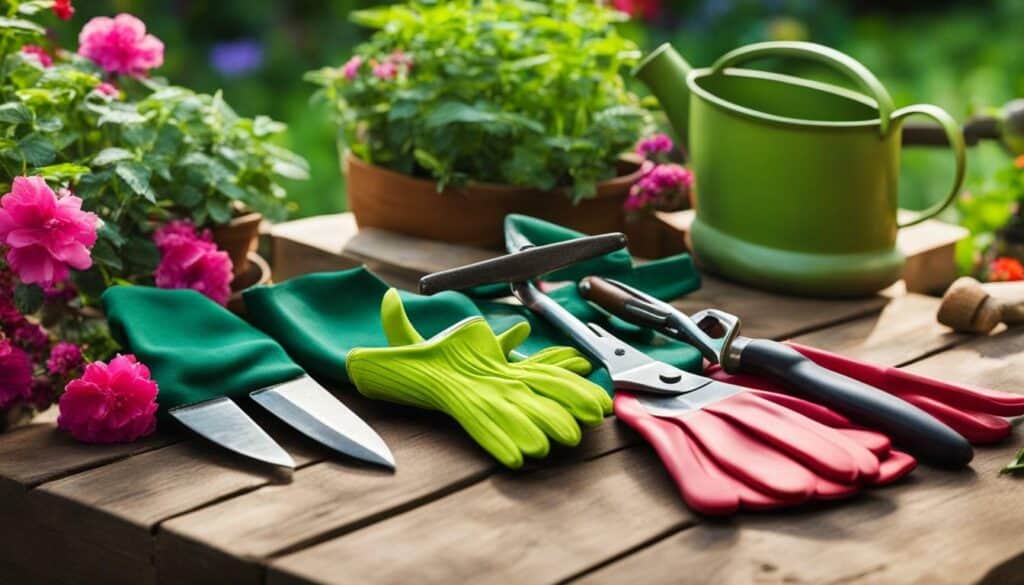
Essential Garden Tools and Supplies
Equipping yourself with the right tools and supplies is essential for a successful gardening experience. As a beginner gardener, there are several tools that you will need to have on hand. Some of the essential garden tools include a garden shovel, garden fork, spade shovel, hand trowel, garden gloves, pruners, wheelbarrow, sunscreen, and a sunhat.
In addition to having the right tools, it is also important to know your gardening zone. Your gardening zone will dictate what plants you can grow and the best time to plant them. Understanding the light conditions in your garden is also crucial, as different plants require different levels of sunlight.
When starting a garden, there are various methods to consider. You can dig out existing sod, use raised beds, or containers. Each method has its advantages and disadvantages, so choose the one that works best for your needs.
Good soil quality is crucial for a healthy garden. Consider getting your soil tested to determine its pH level and nutrient content. Amending the soil with compost and other organic materials can help improve soil quality and promote plant growth.
When it comes to planting, use a hand trowel or garden shovel to dig holes for your plants. Use garden soil or potting soil, depending on the type of plants you are growing. Properly caring for plants with pruning shears and a watering can or hose is also important for their health and growth.
In summary, having the right tools, knowledge, and preparation can help create a beautiful and bountiful garden. Use this beginner-friendly guide to start your gardening journey off on the right foot.
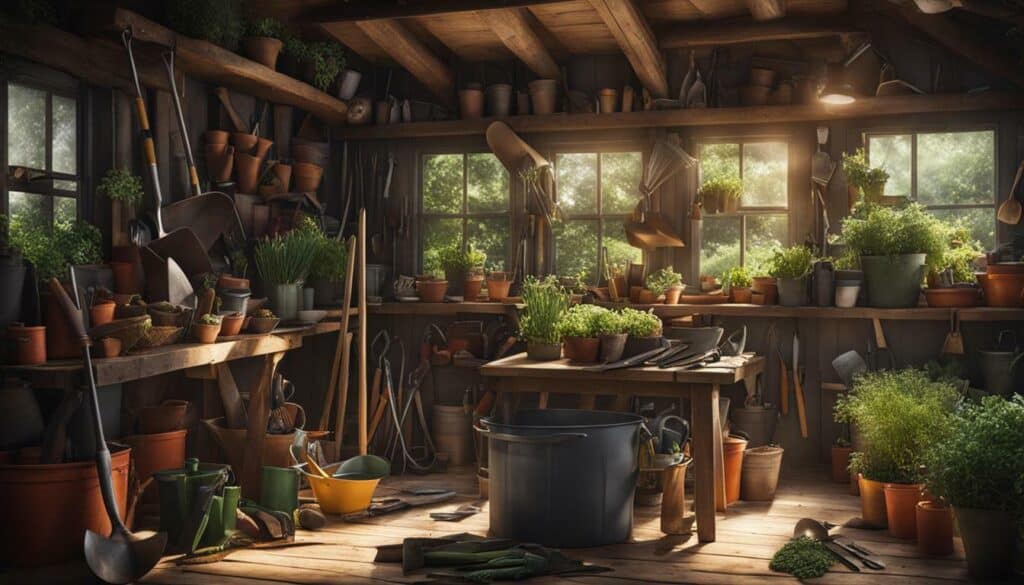
Finding the Right Location for Your Garden
Location is key when it comes to gardening, as it determines the success and aesthetics of your garden. Researching the light conditions is crucial, as not all plants are suited for full sun or shade. Take note of the areas that receive full, partial, and no sunshine throughout the day.
One way to determine the light conditions of your garden is by observing the area for a full sunny day. This will give you an idea of the areas that receive the most sunlight and those that are shaded. Once you have identified these areas, you can then select plants that thrive in the light conditions of your garden.
| Method | Description |
|---|---|
| Traditional Digging | This method involves digging the soil with a shovel or hoe. It is suitable for small gardens and allows for more control over the garden layout. |
| Raised Beds | This method involves building raised beds with a frame and filling them with soil. It is suitable for gardens with poor soil quality and allows for better drainage and easy access to plants. |
| Containers | This method involves using pots or containers to plant your garden. It is suitable for small spaces and allows for mobility and flexibility in gardening. |
Choosing the right method for your garden ultimately depends on your preferences, available space, and gardening goals. Good soil quality is essential for successful gardening, and soil amendments like compost and leaf mold can help improve it. It is recommended to prepare the soil and consider the pH level and nutrient content before planting.
Using the right tools, like a hand trowel, pruning shears, and a watering can, is important for gardening. These tools make planting and maintenance easier and more efficient.
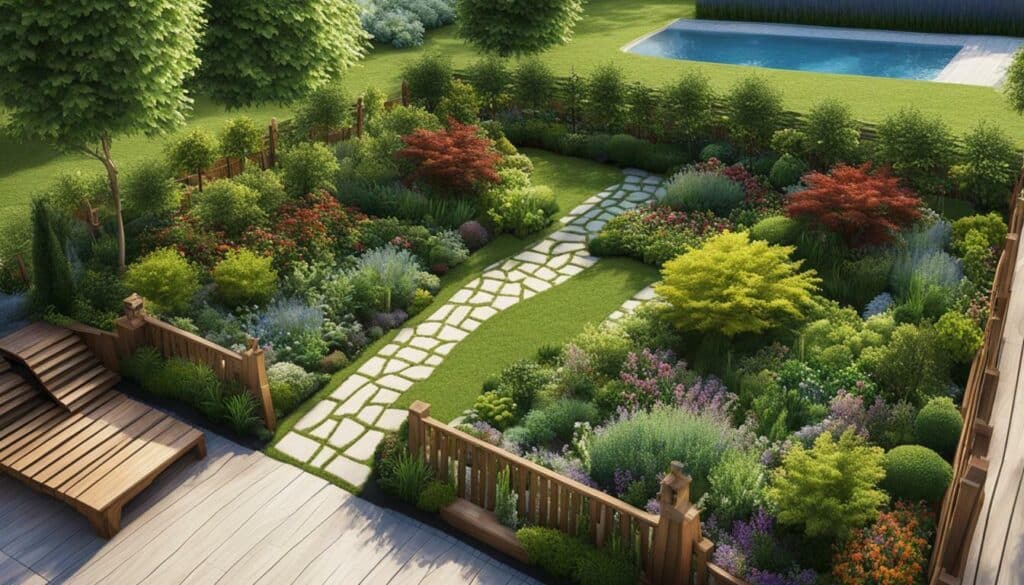
When you have chosen your garden location, method, soil, and tools, you can start planting. Determine the spacing and depth required for each plant, and use the appropriate tools and techniques. With careful planning and good maintenance, your garden can thrive and bring beauty and bounty to your home.
Starting Your Garden: Methods to Consider
Ready to get your hands dirty? Let’s explore three popular methods for starting your garden and help you choose the one that suits you best.
First, consider traditional in-ground gardening. This method involves removing existing sod to create a garden bed, which is then cultivated and amended with compost and other soil nutrients. Although it requires more effort and time, in-ground gardening provides ample room to grow a wide variety of plants, including vegetables, flowers, and shrubs.
Another option is raised bed gardening, which involves building a garden bed above ground level using wooden boards or other materials. This method offers several benefits, including better soil drainage, easier access to plants, and improved soil quality. When selecting wood for your raised bed, opt for untreated wood to avoid exposure to harmful chemicals.
Finally, container gardening is an excellent choice for those with limited space or who want more flexibility with their garden. It involves planting in containers such as pots, planters, or hanging baskets, which can be easily moved around to take advantage of changing sunlight conditions. Choose appropriately sized containers, depending on the size and type of plant you want to grow, and use good quality potting soil to give your plants the nutrients they need to thrive.
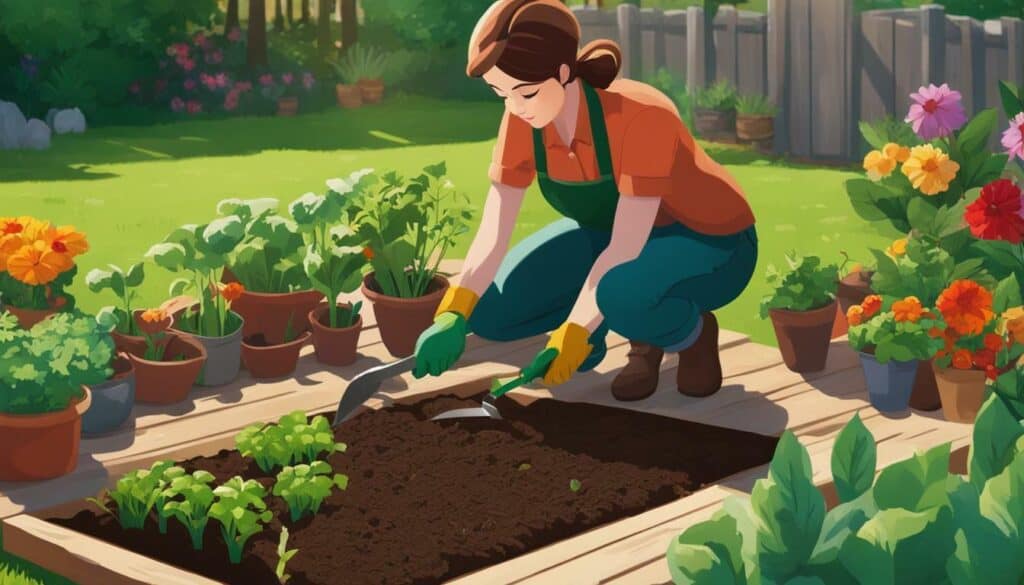
Whichever method you choose, consider the location and layout of your garden carefully. Make sure it receives adequate sunlight and has access to water, and avoid planting too close to trees, which can compete for nutrients and water. Remember to prepare the soil properly, incorporate compost and other soil amendments, and choose plants that are suitable for your climate and gardening zone. With a bit of effort and some basic gardening tools, you can create a beautiful and rewarding garden in no time.
Soil Preparation and Amendment
The key to a healthy and thriving garden starts with the soil. Let’s discover the essential steps for preparing and enriching your soil to create a thriving environment for your plants.
| Step | Description |
|---|---|
| Know Your Soil | Before any planting, it is important to know your soil. Having your soil tested can help determine the pH and nutrient levels, and whether any amendments are needed. Contact your local cooperative extension or garden center for soil test kits and instructions. |
| Amend Your Soil | If amendments are necessary, a good place to start is with compost and leaf mold. These organic materials can improve soil texture, add nutrients, and help retain moisture. Other amendments such as bone meal, blood meal, and fish emulsion can also be used to meet specific nutrient needs. |
| Learn Your Plants’ Needs | Each plant has unique requirements for soil pH and nutrient levels. Understanding these requirements can help you select the best plants for your soil and amend it accordingly. |
Good-quality soil is key to the success of your garden. Soil preparation and amendment may seem daunting, but with the right tools and techniques, it can be made easy. Don’t be afraid to get your hands dirty, and enjoy the process of creating a healthy and thriving environment for your plants.
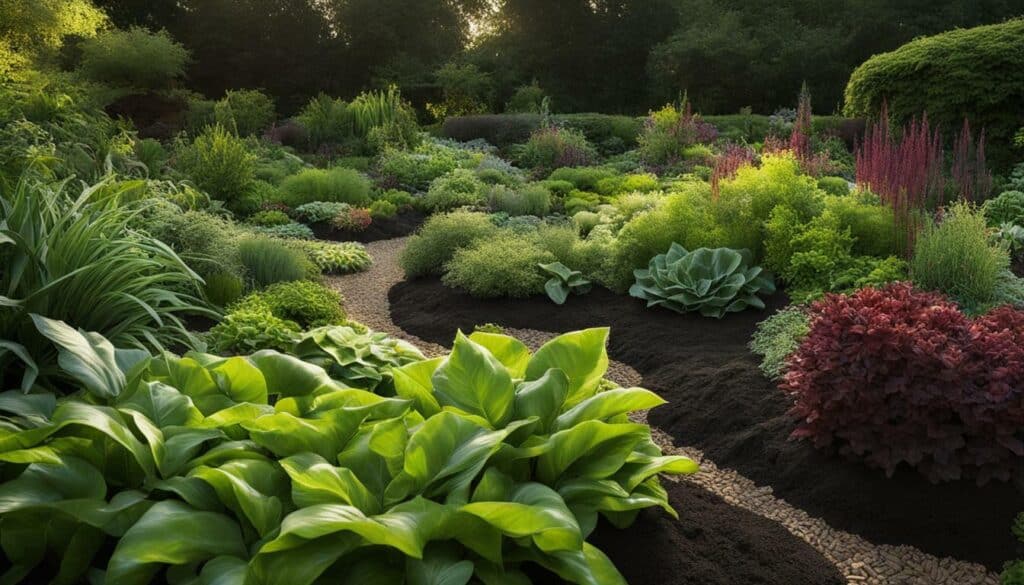
Planting Your Garden and Essential Supplies
It’s time to bring your garden to life! Learn how to plant your carefully chosen plants and discover the essential supplies you’ll need for a successful planting experience.
Before you start planting, it’s important to know your gardening zone, which will help you choose the right plants and determine when to plant them. Once you have an idea of what you want to grow, you’ll need some essential gardening tools. These include a garden shovel, fork, trowel, gloves, pruners, and a wheelbarrow.
Another factor to keep in mind when selecting plants is the light conditions in your garden. Some plants require full sun, while others grow best in shade or partial shade.
There are different methods for starting a garden, including traditional in-ground gardening, raised bed gardening, and container gardening. The traditional method involves digging out existing sod, while raised bed gardening involves building a garden above ground level with a frame and adding soil to it. Container gardening is perfect for small spaces and involves planting in containers such as pots, planters, or hanging baskets.
Good soil quality is essential, and you can amend it by adding compost or using store-bought alternatives. When it comes time to plant, you’ll need tools like a hand trowel or garden shovel, garden soil, and the plants of your choice.
Gamlakart is a reliable online platform to find all the essential gardening supplies and tools you need for a successful planting experience. Whether you are a seasoned gardener or a beginner, these tips and supplies will help you create a beautiful and bountiful garden.
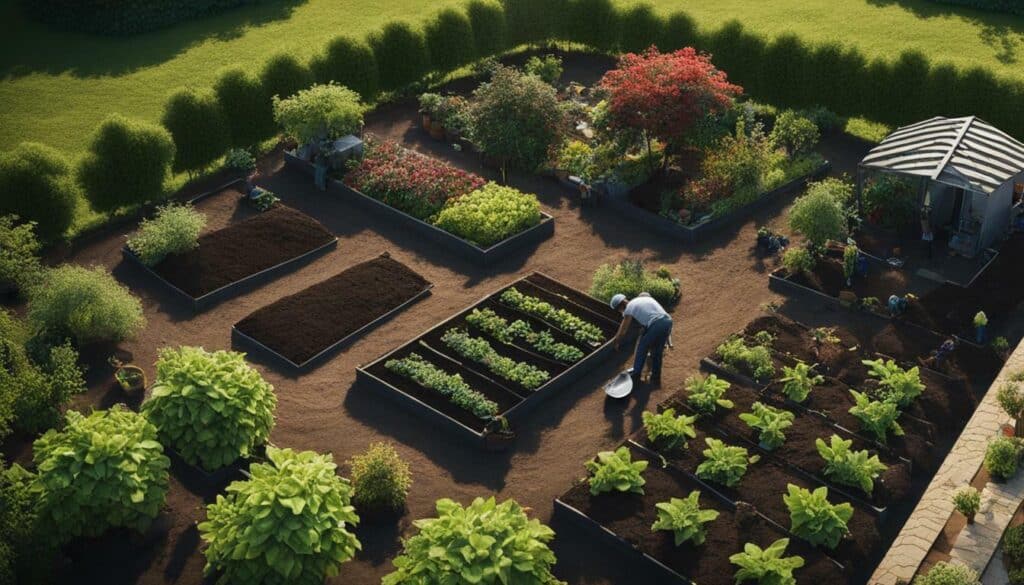
Nurturing Your Garden: Maintenance Tips and Techniques
Once your garden is planted, it’s time to put on your gardening gloves and dive into the world of garden maintenance. Get ready to learn some essential tips and techniques to keep your garden in pristine condition.
First, knowing your gardening zone is crucial to maintaining a healthy garden. Different plants flourish in different zones, and it’s important to choose plants that are suited to your area’s climate. This saves you the hassle of trying to nurse threatened plants and ensures your garden thrives.
Next, having the right tools is essential for maintaining a healthy garden. A garden shovel, fork, trowel, gloves, and pruners are basic tools to have. A brass spray nozzle is useful for gentle watering, while gumboots shield your feet from the wet earth. A wheelbarrow, garden fork, and hoe are also handy for moving soil and tilling the ground.
Soil preparation and amendment play an important role in your garden’s upkeep. Good soil quality is vital for plant growth, and amending your soil with compost or leaf mold can help maintain the proper balance of nutrients.
Proper planting techniques are also crucial for garden maintenance. Dig a hole twice the size of the rootball and tease the roots before planting. Mulching around plants helps retain moisture and suppress weeds.
Regular watering is important, and using a brass spray nozzle helps distribute water gently. Fertilizing your plants with an organic fertilizer every few weeks will keep them in peak condition. Be sure to wear gloves when handling fertilizers and follow the safety instructions on the package.
Sustainable gardening practices are also important for long-term garden maintenance. Consider using organic gardening techniques to prevent chemical runoff from contaminating the soil. Composting your kitchen scraps and yard waste is another way to create healthy soil and reduce waste. Finally, think about long-term garden projects, like planting perennials or installing a rain garden, to keep your garden healthy and beautiful for years to come.
“Gardening is the art that uses flowers and plants as paint, and the soil and sky as canvas.” – Elizabeth Murray
Harvesting and Enjoying the Fruits of Your Labor
The real delight of gardening lies in the moment you harvest and savor the rewards of your hard work. Let’s explore the art of harvesting and celebrate the delicious and beautiful results.
One of the first steps to ensure a bountiful harvest is to know your gardening zone. Understanding when to plant and what plants thrive in your area is essential. With proper planning, you can enjoy a variety of fruits, vegetables, and herbs throughout the growing season.
After you’ve harvested your vegetables and fruits, it’s important to store them properly to ensure they stay fresh and flavorful. This includes washing, trimming, and refrigerating them in appropriate containers. For leafy greens like lettuce and spinach, wrap them in a damp paper towel and store them in an airtight container in the fridge. For fruits like strawberries and blueberries, store them in a single layer in a shallow container and refrigerate.
Maintaining a healthy garden requires regular maintenance. One of the best ways to keep your garden healthy is through organic gardening techniques. This includes using natural pest control methods like companion planting and using compost and leaf mold to amend your soil. Be sure to also regularly water and fertilize your plants as needed.
When it comes time to harvest, use essential tools like pruning shears and hand trowels to ensure you’re getting the best produce. Remember to harvest early in the day when plants are at their freshest.
Gamlakart offers a wide range of garden pots, planters, and tools to meet your gardening needs. From raised beds to container gardens, we have everything you need to start and maintain a beautiful and productive garden.
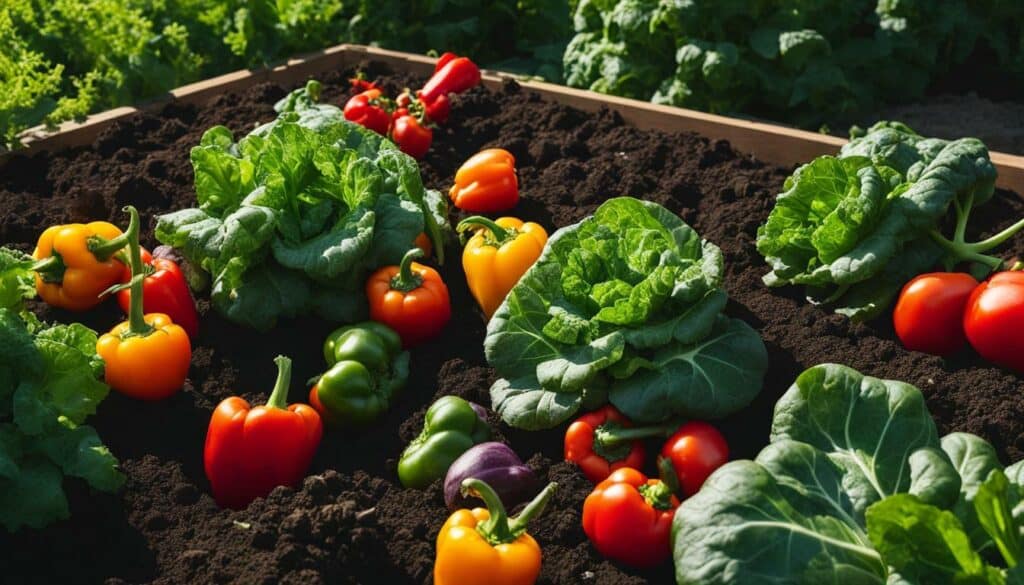
In conclusion, harvesting the fruits of your labor is one of the most rewarding aspects of gardening. With proper planning, maintenance, and harvesting techniques, you can enjoy a delicious and beautiful bounty from your garden. Remember to use organic gardening techniques, pick the right tools and supplies, and choose the right plants for your gardening zone. Happy harvesting!
Sustainable and Environmentally Friendly Practices
As gardeners, we have the power to nurture not only our own green spaces but also the environment. Let’s explore some sustainable practices and discover beginner-friendly plants that contribute to a greener world.
Knowing your gardening zone is crucial for selecting the right plants that will thrive in the local environment. Using organic gardening techniques can help reduce the environmental impact of your garden while keeping it healthy and vibrant. By incorporating eco-friendly gardening tools and supplies into your routine, such as compost, mulch, and leaf mold, you can improve soil quality and reduce waste.
Starting a garden using raised beds or container gardening is an excellent option for those with limited space. It also allows for better water conservation and less soil compaction. Proper soil preparation and planting techniques are essential for the success of a garden. Investing in high-quality gardening hand tools, such as hand trowels, pruning shears, and rakes, can make gardening easier and more enjoyable.
Gamlakart offers a variety of gardening pots, planters, tools, and equipment to meet your gardening needs. From garden gloves to watering cans, we have everything you need to create a sustainable and beautiful garden.
Some beginner-friendly plants that are great for the environment include herbs like basil, mint, and oregano, which can be grown in small containers on a windowsill. Native plants and wildflowers are also excellent choices as they are adapted to local growing conditions and support local ecosystems.
By following sustainable and environmentally friendly practices, you can create a beautiful and bountiful garden while minimizing your impact on the environment. Let’s work together to create a greener world, one garden at a time.
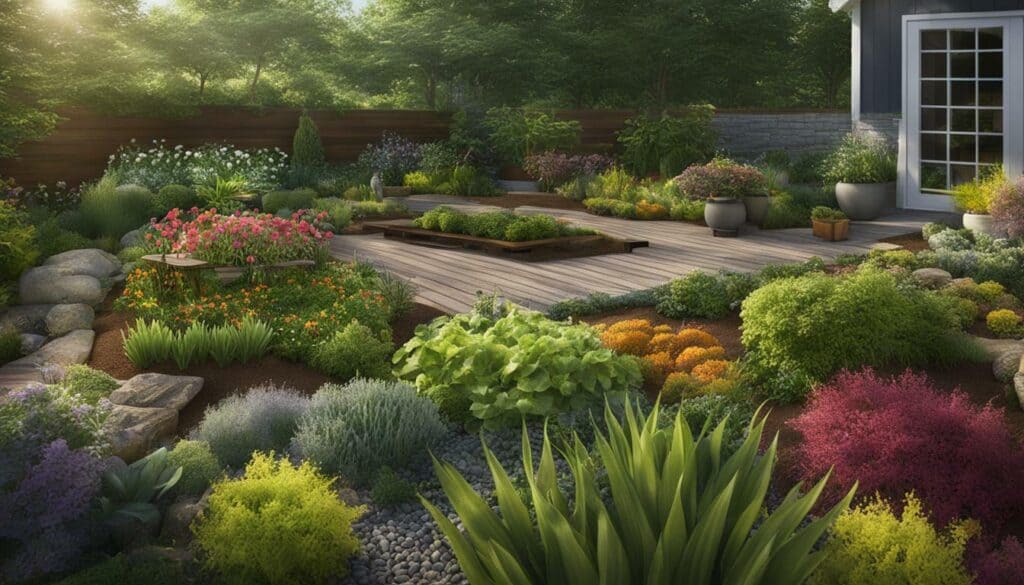
Conclusion
In conclusion, gardening is a rewarding and therapeutic activity that can bring joy to both experienced gardeners and beginners. With Garden 101, you now have the knowledge and inspiration to embark on your gardening journey and create a stunning and rewarding garden. It is important to know your gardening zone and understand the specific needs of plants in terms of light conditions.
Stocking up on the right gardening tools and supplies, such as shovels, gloves, and pruners, is crucial for success. Different methods of starting a garden, such as traditional digging, raised beds, or container gardening, offer options for various spaces and preferences.
Good soil preparation, including soil testing, amending, and the use of compost, is vital for healthy plant growth. Planting and caring for plants is relatively easy with the right tools and techniques, such as using a hand trowel, pruning shears, and watering cans. It is also important to consider the use of proper planters and garden pots.
Overall, with the right knowledge and tools, anyone can create a beautiful and thriving garden. Happy gardening!
FAQ
Q: What is Garden 101: Easy Basics?
A: Garden 101: Easy Basics is a beginner’s guide to gardening that provides tips and inspiration for those new to gardening.
Q: Why is it important to know your gardening zone?
A: Understanding your gardening zone is crucial for selecting the right plants that will thrive in your specific climate and growing conditions.
Q: What are the essential garden tools and supplies for beginners?
A: The essential garden tools and supplies include a hand trowel, pruners, gloves, watering can, and potting soil, among others. Additionally, we recommend beginner-friendly plants that are easy to grow and maintain.
Q: How do I find the right location for my garden?
A: To find the right location for your garden, consider factors such as sunlight exposure, soil drainage, and proximity to water sources. These factors can impact plant growth and the overall layout of your garden.
Q: What are the different methods for starting a garden?
A: There are three main methods for starting a garden: container gardening, raised bed gardening, and traditional in-ground gardening. Each method has its own benefits and considerations.
Q: How do I prepare and amend my soil?
A: Good soil quality is essential for healthy plant growth. To prepare and amend your soil, consider testing its pH levels, adding organic matter such as compost or aged manure, and ensuring proper drainage.
Q: How do I plant my garden and what supplies do I need?
A: When planting your garden, consider factors such as plant spacing, depth, and proper planting techniques. Essential planting supplies include a garden shovel, plant markers, and a watering system.
Q: How do I maintain my garden?
A: To maintain your garden, practice regular watering, weeding, and mulching. Additionally, consider organic gardening techniques to promote a healthy and pest-free environment.
Q: How do I harvest my garden’s fruits and vegetables?
A: When it’s time to harvest, carefully pick fruits and vegetables at their peak ripeness. Enjoy the fruits of your labor by incorporating them into delicious recipes or sharing them with friends and family.
Q: What are sustainable and environmentally friendly gardening practices?
A: Sustainable and environmentally friendly gardening practices include using organic gardening techniques, conserving water, attracting beneficial insects, and selecting plants that require less maintenance and resources.
Source Links
- https://stacyling.com/gardening-101-a-guide-for-beginners/
- https://medium.com/@gamlakart/gardening-101-all-the-tools-you-need-to-start-gardening-d2fbb3b24852
- https://www.amazon.com/Green-Thumbs-Activity-Outdoor-Gardening/dp/155652238X
- https://www.amazon.com/Gardening-101-Beginners-Guide-Cultivating/dp/B0CC7QS54Y
- https://www.bobvila.com/articles/hardiness-zones/
- https://www.marthastewart.com/8375670/usda-plant-hardiness-zones
- https://www.mysoulfulhome.com/my-soulful-home/garden-zones-101-knowing-your-zone
- https://www.almanac.com/gardening-tools-guide
- https://porchdaydreamer.com/essential-garden-tools/
- https://www.finegardening.com/article/basic-gardening-tools-101
- https://sebsnjaesnews.rutgers.edu/2020/04/choosing-the-right-location-for-your-vegetable-garden/
- https://www.almanac.com/vegetable-gardening-for-beginners
- https://www.planetnatural.com/garden-planning/
- https://homesteadandchill.com/how-to-start-a-garden-101/
- https://www.goodhousekeeping.com/home/gardening/a32675326/gardening-101/
- https://www.burpee.com/blog/gardening-101.html
- https://www.gardendesign.com/soil/
- https://www.almanac.com/soil-preparation-how-do-you-prepare-garden-soil-planting
- https://www.anneofgreengardens.com/gardening-101/soil-preparation/
- https://simplysmartgardening.com/gardening-101-beginning-gardener/
- https://extension.wvu.edu/lawn-gardening-pests/gardening
- https://www.ecowatch.com/gardening-tips.html
- https://www.gardencityharvest.org/the-real-dirt-garden-city-harvest-blog/2015/08/05/enjoy-the-fruits-of-your-labor-harvesting-basics
- https://www.lobservateur.com/2022/05/21/harvesting-vegetables-the-fruits-of-your-labor/
- https://tranquilurbanhomestead.com/harvesting-fruit-101/
- https://montclairlocal.news/2022/07/eco-friendly-sustainable-gardening-101-gardening-for-life/
- https://www.ambientbp.com/blog/how-to-create-a-sustainable-eco-friendly-garden-in-2021
- https://www.sustainablejungle.com/sustainable-living/sustainable-gardening/
- https://greatist.com/connect/beginners-guide-to-gardening
- https://www.homefortheharvest.com/gardening-101/
- https://totalpestsolutionsfl.com/gardening-101-intro-to-gardening/

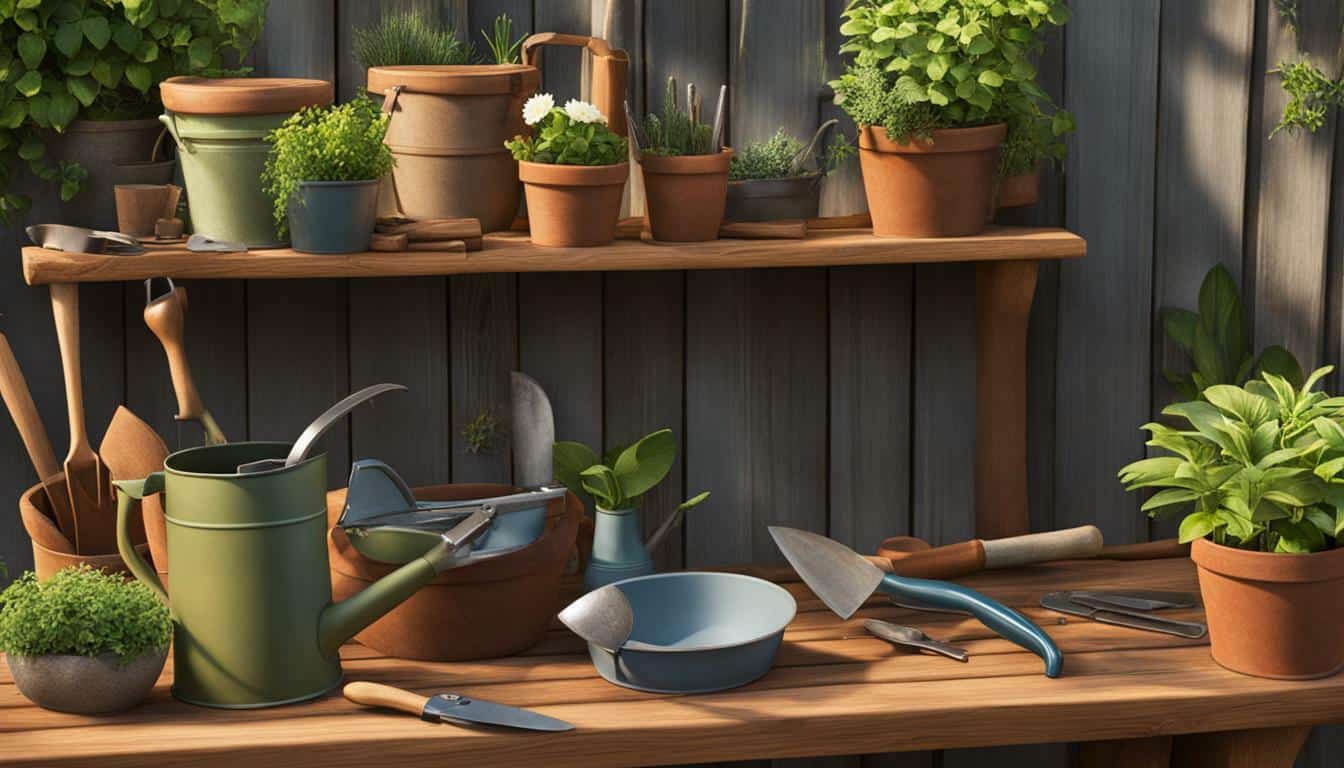



Leave a Reply